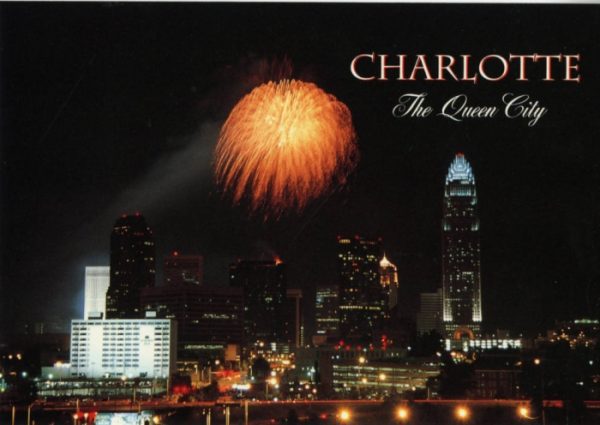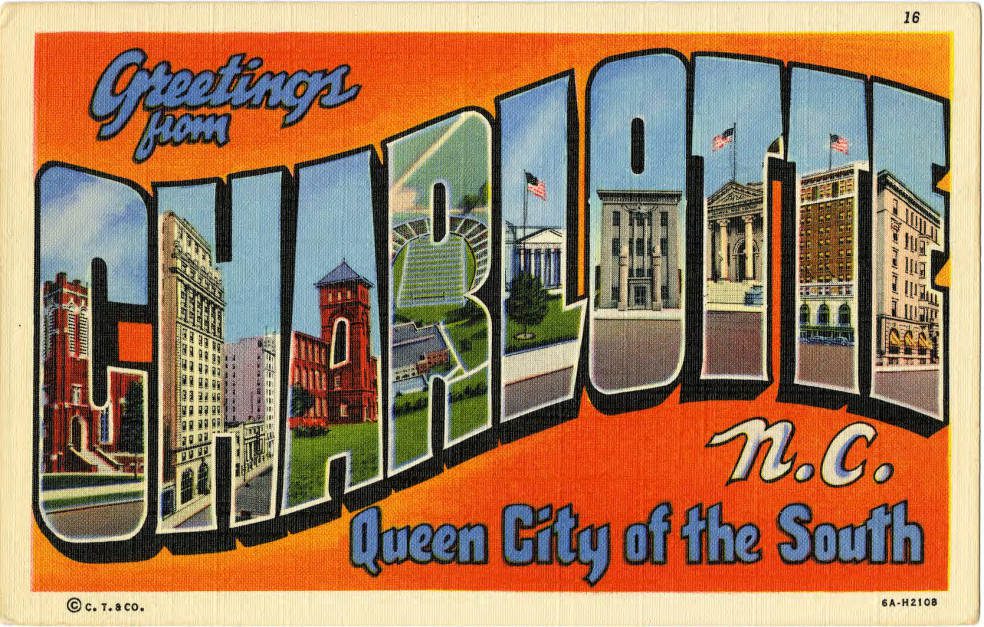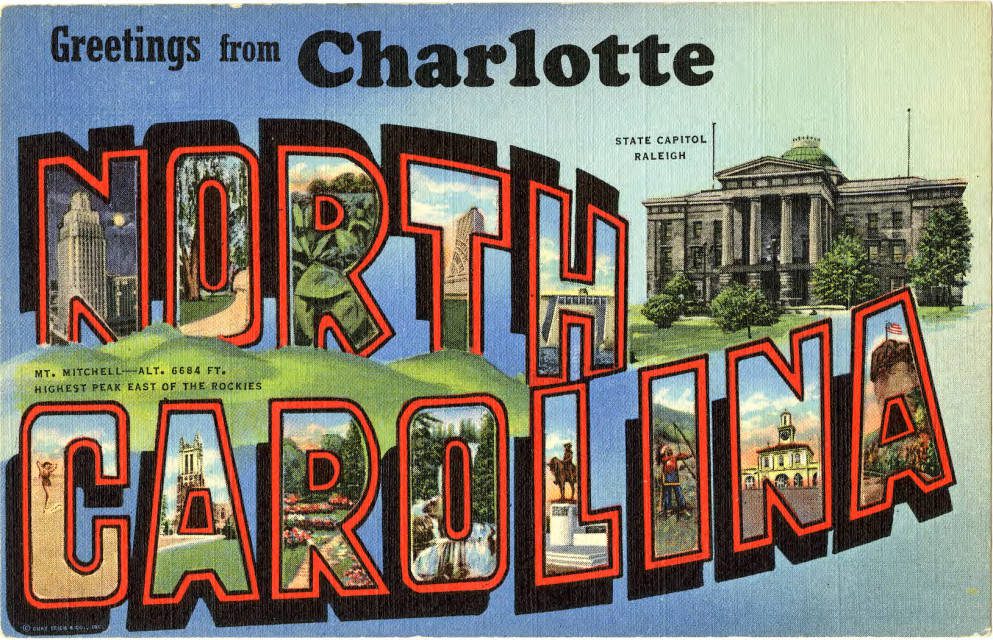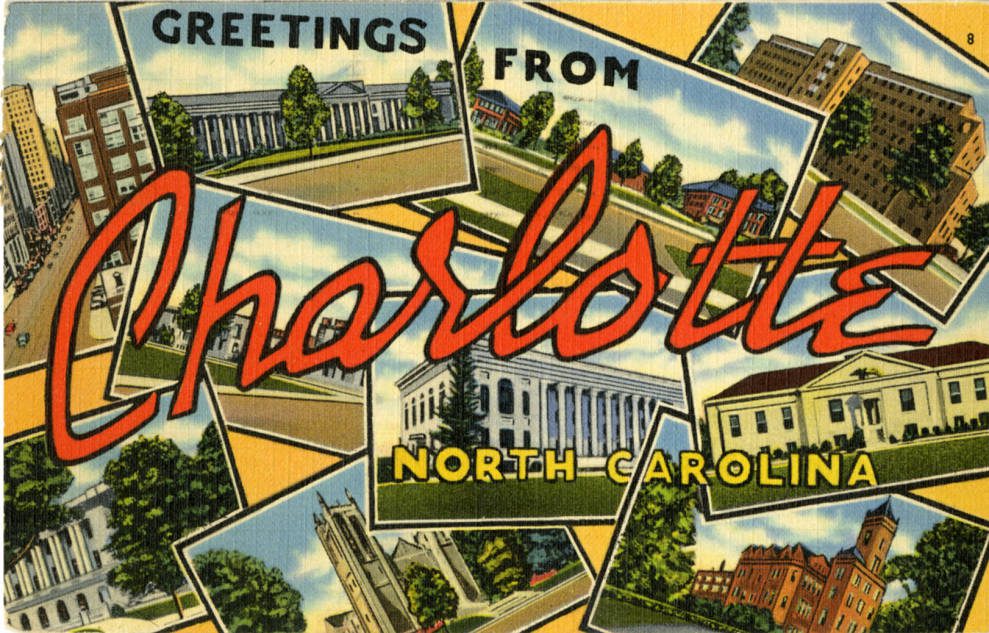Banks? NASCAR? Food? How branding aims to find the Charlotte region’s identity

From basketball to banks, Charlotte’s got a lot (as the slogan goes). But critics say one thing is missing: an actual brand.
Compared to iconic city identities such as Nashville’s “Music City” and even Rockland, Maine’s claim to fame as the “lobster capital of the world,” Charlotte seems to lack one defining characteristic that sets the city and its surrounding counties apart.
“I think Charlotte doesn’t have a brand. That’s not necessarily, today, good or bad,” Janet LaBar, CEO of the new Charlotte Regional Business Alliance, told The Charlotte Observer earlier this year. “That just means that’s an opportunity for us to actually create one.”
Previous efforts to brand Charlotte centered around the city alone, creating confusion over how outlying counties in the region differentiate from inner urban areas. Attempts to classify the region have produced nicknames like “Metrolina,” which some businesses still use, and “Centralina,” which the North Carolina Regional Council of Governments uses to identify nine counties in the state’s Central Piedmont region represented by the Centralina Council of Governments.
The Carolinas Urban-Rural Connection
A special project from the UNC Charlotte Urban Institute
Although the larger region has historically been economically linked through farming, manufacturing and other industries that drove prosperity, it’s likely that many farther-out areas in the 32-county Carolinas Urban-Rural Connection study area don’t identify as being part of “Charlotte” and its associated brands. Some may be closer to other urban centers, such as Winston-Salem or Asheville, or they may identify more with the rural areas of the Uwharries than the metropolitan center of Charlotte.
But closer to the region’s biggest urban core, many do identify with Charlotte, even if they live outside the city or Mecklenburg County. Business leaders have publicly expressed interest in a new brand for the immediate Charlotte region, which typically includes 12 counties in North Carolina and four in South Carolina, ever since a 2015 trip to Nashville.
Marketers who pioneered past branding campaigns say looking for a single quality to distinguish the region won’t work.
“Everybody…has always been looking for that silver bullet,” said Gina Sheridan, chief communications and marketing officer with the Charlotte Regional Visitors Authority. “What we found is that we needed to own what Charlotte was.”
In 2008, the CRVA unveiled “Charlotte’s got a lot,” a destination brand officials say has helped boost tourism and drive economic growth by touting the region’s cuisine, arts, diversity and outdoor recreation opportunities.
“There’s not just that one thing we’re known for,” Sheridan said.
“Charlotte’s brand is ever-evolving and being stuck with one tagline can be the death of a brand,” said Steve Luquire, founder and CEO of advertising and public relations firm Luquire George Andrews (LGA). “The hybrid brand of Charlotte is the advantage we have. We appeal to a broader spectrum than a lot of cities.”
LaBar echoes those sentiments, stressing that a new brand must reflect the 16-county region, not the city alone.
“When we’re positioning in the market, we’re not talking about things specific to the city or county,” she said. “We’re talking about talent, we’re talking about the airport, we’re talking about the cost of doing business here.
“And those are things that, I think, transcend one locality, one jurisdiction.”
Taking a regional focus
The idea of promoting Charlotte regionally came into sharper focus 30 years ago as officials sought to lure more companies. By 1999, efforts coalesced to fix what a task force called Charlotte’s “fuzzy image,” said LGA president Peggy Brookhouse.
A year later, LGA developed the “Charlotte USA” brand to champion the region for its balance of business strength, quality of life and accessibility.

A vintage Charlotte postcard. Photo: Atkins Library, special collections.
“Charlotte USA was right for the time. We were trying to attract headquarters to the Charlotte region,” Brookhouse said. “Decision makers look for quality of life. They look for accessibility for their staff and employees.”
And they look to Charlotte Douglas International Airport, with its 700 daily flights that put passengers “one plane change away from any city in the world,” she said.
“The airport and its connectivity to a number of international cities…was news to people,” Luquire said. “We’re a magnet. One of the negatives around the Charlotte brand up until more recently was we didn’t attract young people, and now we’re getting them in droves.”
Becoming a hotspot
More than 22,000 millennials moved to Charlotte in 2017, placing the region sixth on a list of top 10 cities where millennials are migrating, according to financial tech firm SmartAsset. The Charlotte region gained more than 46,000 new residents in 2018, according to Census estimates. That’s about 126 new people each day.
Those numbers will make branding even more important as millennials age and change the nature of work, said John Martin, CEO of the Virginia-based Southeastern Institute of Research. In a few decades, he said, half the workforce will work remotely or as contractors.
“More and more people are going to be able to pick the place they want to live and work from there,” Martin said. “It’s going to put even more value on (cities) being a great place. That means if you want to get your fair share of younger people, you’ve got to be a hotspot.”
Over the last two years, the CRVA has spent more than $10 million on consumer-facing media convincing people that Charlotte is pretty hot.

A vintage postcard for Charlotte features landmarks from other parts of the state, including Raleigh. Photo: Atkins Library, special collections.
“We know we’re positively impacting people’s perceptions about Charlotte,” said Sheridan. “Banking has been a prominent piece, as have the NASCAR roots, to our history. But (Charlotte’s got a lot) emphasizes memorable experiences over assets and the soul of the city over its picturesque skyline.”
“Charlotte’s got a lot” has generated $670 million economic impact for the region, thanks in part to visitors whose tourism dollars fuel local industry, according to estimates from the CRVA. And there have been spillover effects for the region.
“Even though we never talked about Charlotte being a good place to start a career, retire or buy a second home, we saw all those sectors positively impacted by the messages visitors were receiving,” she said.
Those messages evolved about three years ago when the CRVA partnered with advertising firm BooneOakley, the city of Charlotte, the Arts & Science Council, Charlotte Center City Partners and the Charlotte Regional Partnership to create a suite of “brand marks,” new logos that merge Charlotte’s iconic crown with the “CLT” and “QC” symbols.
The CRVA shared those graphics with other groups that promote the region so they all speak with “one voice” — in and outside the city’s limits, Sheridan said.
“People are not seeing these city lines and county lines,” she said. “They are looking at…all there is to do in the region.”
Not just banking anymore
As regional branding moves to the forefront, there’s a concerted effort to help Charlotte shed its “banktown” reputation.
In 2010, the Global Vision Leaders Group formed to change Charlotte’s image as a hotbed for banks to a “global hub of international trade and commerce.”
“We were pretty frightened about what was going to happen to the banks here” after the financial crisis, said John Paul Galles, a business and communications consultant who co-founded the group. “We were looking for ways to diversify the Charlotte region.”
That meant extolling Charlotte’s airport and proximity to several major ports along the eastern seaboard.
“Charlotte’s location midway between New York City and Miami gives it a really critical location that offers opportunities,” Galles said. “A lot of European companies have moved to the Charlotte region because of the ports and because of the airport. They view Charlotte as a gateway to the U.S. economy.”

A vintage postcard for Charlotte. Photo: Atkins Library, special collections.
About 722 European companies have planted headquarters or offices in the Charlotte region, according to figures from the Charlotte Regional Business Alliance. They include firms based in countries as large as Germany and as small as Luxembourg.
“‘Charlotte’s got a lot’ isn’t a bad brand and we’ve been known as a banking center; that’s not bad either,” Galles said. But, he adds, neither supports “a diverse business community that has more stability through the ups and downs of economic activity.
“We’ve got to be looking at this in 100-year increments,” he said. “What kind of steps can we take for the next 100 years that keeps us in the mix economically for job creation?”
LaBar ponders those same questions as her team starts work on a new brand. “I don’t have the hashtag today,” she said. “The brand position question…is something we’re still looking into.”
‘A mindset of Charlotte’
Leaders face a daunting marketing challenge: how do they create a brand that pays homage to Charlotte’s business past while looking to a future that, for millennials especially, has less to do with finance and more to do with community and inclusion?
“It used to be you just go after big companies, land one and jobs would follow that company and your community grows,” said Martin of SIR. “The new economic development model is….you build a place people want to be. When you have a great place people want to be, companies are going to be beating a path to your door, chasing talent.
“Right now, Charlotte’s on fire when it comes to talent.”
That’s part of the story Charlotte should tell about itself, he said, although he admits trying to develop a regional narrative everyone appreciates could get “messy.”
Still, the inclusion of regional amenities beyond those in Charlotte’s urban core is an increasingly important part of marketing strategies. Surrounding communities are also emphasizing their quality of life as an attraction for talent — especially outdoor recreation and cultural amenities. For example, Gaston County’s state parks, waterways and authentically revived downtowns are an inviting and easily accessible amenity for potential Charlotteans — while Charlotte is an appealing workplace and entertainment destination for potential Gastonians.
Without those surrounding amenities, Charlotte may have a greater challenge in holding itself up to other hot markets like Denver and Portland, with their wealth of nearby recreational opportunities and culture.
But LaBar’s not worried.
“Every part of the region understands that the success of Charlotte will benefit them,” she said. “A company might think Charlotte’s on (their) short list, but they don’t see those jurisdictional boundaries.
“If they end up in Lancaster, S.C., or they end up in Monroe…they’re going in with a mindset of ‘Charlotte.’”
Ely Portillo contributed
Jonathan McFadden